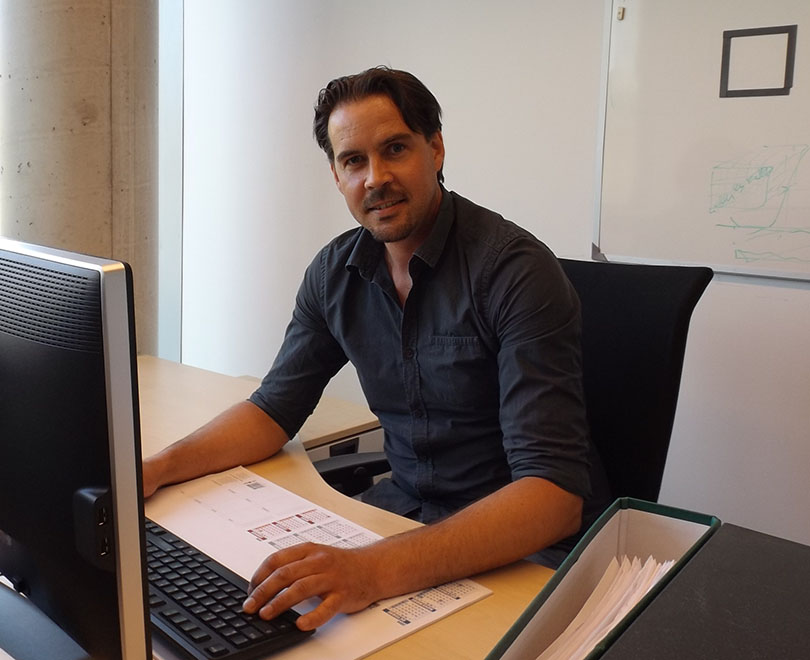Gwenael Toullelan | CEA
20th June 2015
Today, we are honored to present you the discussion we had with Gwenael Toullelan, who is responsible for experimental characterizations of CIVA at the CEA. We hope it can give you a better insight on this key process.

Mr. Toullelan, you work at CEA as responsible for experimental characterizations of CIVA. Could you please explain to us what this process is?
Digital simulation is a powerful tool widely used in the process of qualification of NDT inspections. The reliability of the conclusions drawn from the simulation depends directly on the validity of the codes and models used. It is therefore essential to quantify the level of reliability of the predictions of the different CIVA models in NDT configurations: that is the purpose of the experimental characterization of CIVA. This work is based on comparisons between experimental results and CIVA predictions, and is made for configurations of inspection representative of NDT issues.
How do you proceed?
Once the theme of the experimental characterization is chosen (after discussions between Extende and the CEA), the experimental characterization procedure followed to assess the level of reliability of the models’ predictions includes several steps: define and conduct experiments, describe precisely these experiments in CIVA (precise knowledge of the input parameters), perform calculations with CIVA and interpret the results of comparisons between the experiment and the simulation.
To perform the experiments, mock-ups representing the NDT scenario are made. They are of simple geometries (planar or cylindrical), machined with calibrated defects. A reference block with reference reflectors is also made of the same grade of material for the calibration of one or more probe, which is essential for the determination of the input parameters of the probes in CIVA and the measurement of the reference amplitude. During the inspections, a slow variation of a single parameter at a time is done, such as the height of a notch or its disorientation, the depth of a SDH or its diameter, the PCS (Probe Center Spacing) during a TOFD inspection, the water path or the sensor’s disorientation…
This eases the interpretation of the gaps observed sometimes between the measure and the predictions of CIVA, identifying their origin as best as possible.
Experimental tests are carried out at CEA by myself and comparisons works (simulations and analysis of results) are realized in parallel in pairs.
Does it take a lot of time?
Experimental characterizations require rigor in carrying out the experiments and the mastery of all the elements constituting the measurement chain (probe, acquisition system), a methodology for the absolute measurement of the input parameters (definition of the probe and the wedge, waves speed and attenuation for the given material…). To ensure the reliability of the experimental tests and to minimize the sources of uncertainty, an experimental procedure is written and preliminary tests are carried out. Then, during the study, tests of reproducibility are systematically carried out, in order to assess the overall uncertainties associated with mechanical adjustments and the steel quality of the mock-up. All these steps are really time consuming.
What is the most delicate stage of the process?
The most delicate step is the mastery of CIVA input parameters (speed, materiel attenuation) which are measured experimentally. To achieve this, experimental characterization, blocks need to be made of homogeneous steel, free from internal discontinuities and surface irregularities and with good surface. This way, the measures will be even more accurate, and the description of the experiment in CIVA, even more faithful and representative of the reality. The insurance of exact input parameters for CIVA models allows, in case of differences observed between the experiment and simulations, to not doubt these parameters.
What will happen if an experience is not validated? Has this ever happened?
The different comparisons carried out so far have shown that CIVA’s predictions are reliable in most of the cases studied.
But gaps are sometimes observed between the experiment and the simulation. The guarantee of the quality of the experiments, and the mastery of the measurement uncertainties and CIVA input parameters, obtained thanks to the procedure followed, can explain these differences with simulation problems: physical phenomena not taken into account by the model (because of its approximations) or input parameter values located outside the range of validity of the model. The explanation of the differences often involves carrying out further complementary simulations with other models than the one being tested.
Does this procedure induce improvements in the development of the future versions of the software?
Actions are taken in CIVA to expand the area of validity of the models and take into account some physical phenomena not taken into account at the moment in CIVA. Thus, the various experimental characterizations conducted so far that have revealed differences will be used in this case as a library for the experimental characterization of new models.
